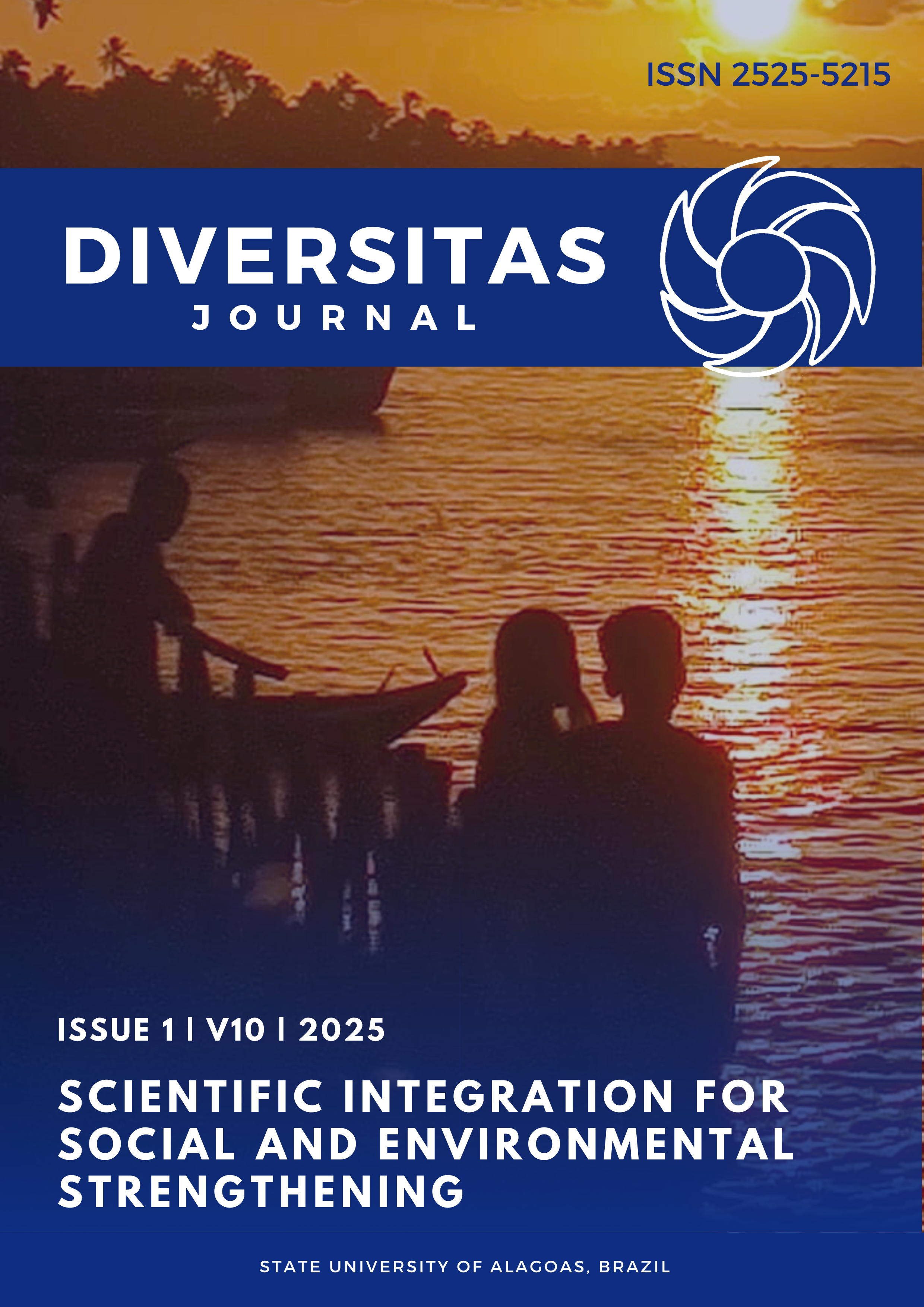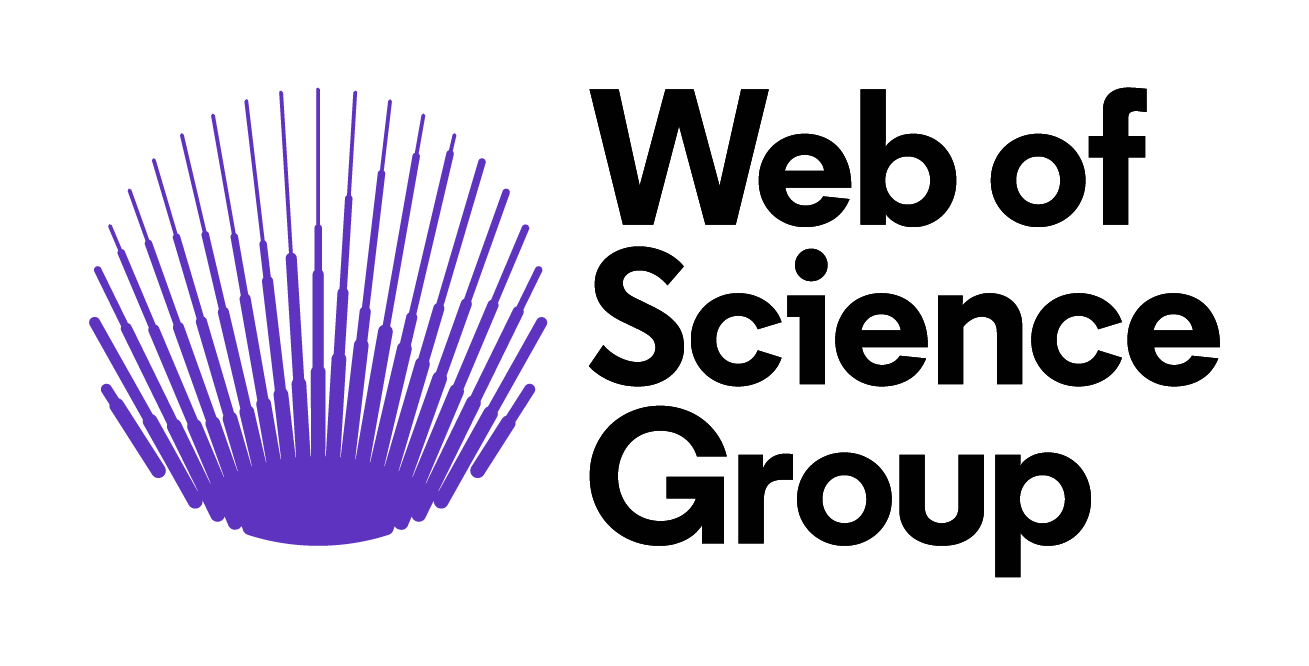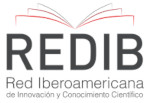Evaluation of the sensitivity of Colletotrichum spp. to Trichoderma harzianum
DOI:
https://doi.org/10.48017/dj.v10i1.3065Keywords:
antracnose, biofungicides, biological fungicides, mycoparasitism, mycoparasitism PassifloraAbstract
The objective of this study was to evaluate in vitro the effects of T. harzianum on five species of Colletotrichum. For the pairing test, Colletotrichum spp. was inoculated in synthetic PDA medium and after 72 hours the antagonist T. harzianum was added, in the opposite direction to the phytopathogens. To evaluate the action of metabolites, Colletotrichum species were inoculated in the center of Petri dishes, separately and after 48 hours T. harzianum was inoculated in plates containing synthetic PDA medium. The bases of the plates containing antagonist and phytopathogens were joined and sealed. The mycelial growth index (MGI) and the percentage of mycelial growth inhibition (PMGI) were estimated. When evaluating the antagonism of T. harzianum to Colletotrichum spp. in the pairing test and volatile metabolites, it was observed that all Colletotrichum species presented PMGI below 31% in both tests. In the MGI for the matching test, it was observed that C. tropicale was the most sensitive species (1.87 cm) at the concentrations of 1 and 1.5 L/ha, while in the volatile metabolites test it was C. plurivorum (3.21 cm). T. harzianum is a promising species for the reduction of Colletotrichum spp. associated with anthracnose in passion fruit crops.
Metrics
References
Associação Brasileira das Empresas de controle biológico. (2023). https://www.gov.br/agricultura/pt-br/assuntos/camaras-setoriais-tematicas/documentos/camaras-tematicas/insumos-agropecuarios/anos-anteriores/panorama-e-desafios-do-controle-biologico-no-brasil-77.pdf .
Ahmed, M. F. A., El-Fiki, I. A. I. (2017). Effect of Biological Control of Root Rot Diseases of Strawberry Using Trichoderma spp. Middle East Journal of Applied Sciences, 7(3), 482-492, 2017.
Barbosa, G. G., Costa, F. A., Costa, A. C., Ulhoa, C. J. (2021). Evaluation of the potential of Trichoderma spp.native to the state of Mato Groso do Sul against the fungus Colletotrichum musae. Brazilian Journal of Development, 7(3), 29484-29502, mar. 2021.
Bastos, C. N. (1997). Efeito do óleo de Piper aduncum sobre Crinipelise outros fungos fitopatogênicos. Fitopatologia Brasileira, 22(3), 441 - 443, 1997.
Bell, D. K., Wells, H. D., Markham, C. R. (1982). In vitro antagonism of Trichoderma species against six fungal phytopathogens. Phytopathology, 72(4), 379-382, 1982.
Bettiol, W., Morandi, M. A. B., Pinto, Z. V., Paula Júnior, T. J., Corrêa, É. B., Moura, A. B., Lucon, C. M. M., Costa, J. C. B., Bezerra, J. L. (2012). Produtos comerciais à base de agentes de biocontrole de doenças de plantas. Embrapa Meio Ambiente, 155.
Bettiol, W., Pinto, Z. V., Silva, J. C., Forner, C., Faria, M. R., Pacífico, M. G., Costa, L. S. A. S. (2019). Produtos comerciais à base de Trichoderma. In: M. C. Meyer, S. M. Mazaro, J. C. Silva (orgs.), Trichoderma: Uso na agricultura. (pp. 538). Embrapa.
Bomfim, M. P., José, A. R. S., Rebouças, T. N. H., Almeida, S. S., Souza, I. V. B., Dias, N. O. (2010). Antagonic effect in vitro and in vivo of Trichoderma spp. to Rhizopus stolonifer in yellow passion fruit. Summa phytopathol, 36(1), 2010.
Carvalho, D. D. C., Junior, M. L., Martins, I., Inglis, P. W., Mello, S. C. M. (2014). Biological control of Fusarium oxysporum f. sp. phaseoli by Trichoderma harzianum and its use for common bean seed treatment. Tropical Plant Pathology, 39, 384-391, 2014.
Costa, K. K., Rufino, C. P. B., Macedo, P. E. F., Nogueira, S. R. (2019). Antagonism of Trichoderma spp. about Colletotrichum gloeosporioides, causal agent of antracnosis of Euterpe precatoria. SAJEBTT, 6(1), 391-397, 2019.
Dean, R., Van Kan, J. A. L., Pretorius, Z. A., Hammond-Kosack, K. E., Di Pietro, A., Spanu, P. D., Rudd, J. J., Dickman, M., Kahmann, R., Ellis, J., Foster, G. D. (2012). The Top 10 fungal pathogens in molecular plant pathology. Molecular Plant Pathology, 13(4), 414-430, 2012.
Dennis, C., Webster, J. (1971). Antagonistic properties of species groups of Trichoderma III. Hyphal interactions. Transactions of the British Mycological Society, 57, 359-363, 1971.
Druzhinina, I. S., Seidl-Seiboth, V., Herrera-Estrella, A., Horwitz, B. A., Kenerley, C. M., Monte, H., Mukherjee, P.K., Zeilinger, S., Grigoriev, I.V., Kubicek, C.P. (2011). Trichoderma: the genomics of opportunistic success. Nature Reviews Microbiology, 9, 749–759, 2011.
Empresa Brasileira de Agricultura e Pecuária (2023). https://www.embrapa.br/busca-de-solucoes-tecnologicas/-/produto-servico/1038/maracuja-azedo-brs-sol-do-cerrado-brs-sc1#:~:text=Maracuj%C3%A1%20azedo%20BRS%20Sol%20do%20Cerrado%20%28BRS%20SC1%29,apresentando%20rendimento%20de%20polpa%20em%20torno%20de%2038%25.
Grano-Maldonado, M. I., Ramos-Payan, R., Rivera-Chaparro, F., Aguilar-Medina, M., Romero-Quintana, J. G., Rodríguez-Santiago, A., Nieves-Soto, M. (2021). Fusarium sp. Isolated from Mangrove in Mexico and the Antagonist Effect of Trichoderma harzianum as an Effective Biocontrol Agent. Plant Pathol J., 37(5), 465–475, 2021.
Hermosa, R., Cardoza, R. E., Rubio, M. B., Gutiérrez, S., Monte, E. (2014). Secondary metabolism and antimicrobial metabolites of Trichoderma. In: V. K. Gupta, M. Schmoll, A. Herrera-Estrella, R. S. Upadhyay, I. Druzhinina, M. Tuohy (orgs). Biotechnology and biology of Trichoderma. (pp. 125-137). Elsevier.
Instituto Brasileiro de Geografia e Estatística. (2022). https://www.ibge.gov.br/explica/producao-agropecuaria/
Koppert. (2023). https://www.koppert.com.br/.
Lohmann, G. T., Rabuske, J. E., Savian, L. G., Tonetto, T. S., Muniz, M. F. B. (2022). Ação antagônica de Trichoderma spp. no crescimento micelial de Colletotrichum gloeosporioides. Acta Biológica Catarinense, 9(1), 25-35, 2022.
Ministério de Agricultura, pecuária e Abastecimento. (2023). https://www.gov.br/agricultura/pt-br/assuntos/noticias/Mapa-registra-recorde-de-95-defensivos-biologicos-em-2020 .
Medeiros, F. H. V., Silva, J. C. P., Pascholati, S. F. (2018). Controle biológico de doenças de plantas. In: L. Amorim, J.A.M. Rezende, A. Bergamin Filho. (orgs.), Manual de fitopatologia. (pp. 573). Agronômica ceres.
Meletti, L. M. M. 2011. Avanços na cultura do maracujá no Brasil. Revista Brasileira de Fruticultura, Volume Especial, 83-91, 2011.
Meyer, M. C.; Mazaro, S.M.; Silva, J. C. (2019). Trichoderma: Uso na agricultura. Embrapa.
Monte, E., Bettiol, W., Hermosa, R. (2019). Trichoderma e seus mecanismos de ação para o controle de doenças de plantas. In: M.C. Meyer, S.M. Mazaro, J.C. Silva (orgs.), Trichoderma: uso na agricultura. (pp. 538). Embrapa.
Morales-Mora, L. A., Andrade-Hoyos, P., Valência-De Itá, M. A., Romero-Arenas, O., Silva-Rojas, H. V., Contreras-Paredes, C. A. (2020). Characterization of strawberry associated fungi and in vitro antagonistic effect of Trichoderma harzianum. Rev. mex. Fitopatol, 38(3), 2020.
Morandi, M. A. B., Bettiol, W., Paulo Júnior, T. J. (2014). Controle biológico de doenças de plantas. In: L. Zambrolim, W.C. Jesus Júnior, F.A. Rodrigues (orgs.) O essencial da fitopatologia: Controle de doenças de plantas. (pp.117). UFV.
Morandi, M. A. B., Júnior, T. J. P., Bettiol, W., Teixeira, H. (2009). Controle biológico de fungos fitopatogênicos. In: M. Venzon, T.J.P. Júnior, W. Bettiol, H. Teixeira (orgs.), Controle biológico de pragas, doenças e plantas invasoras. (pp. 124). Epamig.
Oliveira, J. A. (1991). Efeito do tratamento fungicida em sementes e no controle de tombamento de plântulas de pepino (Cucumis sativus L.) e pimentão (Capsicum annum L.). [Dissertação de Mestrado em Agronomia / Fitossanidade), Universidade Federal de Lavras]
Quevedo, A. C., Muniz, M. F. B., Savian, L. G., Sarzi, J. S., Saldanha, M. A. (2022). In vitro antagonist action of Trichoderma spp. about Fusarium oxysporum. Ciência Florestal, 32(4), 2288-2303, 2022.
Ramada, M. H., Lopes, F. A. C., Ulhoa, C. J. (2019). Trichoderma: metabólitos. In: M. C. Meyer, S. M. Mazaro, J. C. Silva. (orgs.) Trichoderma: uso na agricultura. (pp. 538). Embrapa.
São José, A. R. Controle fitossanitário do maracujá. (2015). https://revistacampoenegocios.com.br/controle-fitossanitario-do-maracuja/
Silva, F. A. S., Azevedo, C. A. V. 2016. The Assistat SoftwarevVersion 7.7 and its use in the analysis of experimental data. Afr. J. Agric. Res, 11(39), 3733-3740, 2016.
Silva, J. L., Lopes, E. M. L., Silva-Cabral, J. R. A., Costa, J. F. O., Lima, G. S. A., Assunção, I. P. 2022. Espécies de Colletotrichum associadas à antracnose em maracujazeiros no Brasil. Diversitas jornal, 7 (3), 2022.
Suassuna, N. D., Silva, J. C., Bettiol, W. (2019). Uso do Trichoderma na cultura do algodão. In: M. C. MEYER, S. M. MAZARO, J. C. SILVA (orgs.) Trichoderma: uso na agricultura. (pp. 538) Embrapa.
Sutarman, A., Miftahurrohmat, A., Nurmalasari, I. R., Prihatinnigrum, A. E. (2020). In Vitro Evaluation of The Inhibitory Power of Trichoderma harzianum Against Pathogens that Cause Anthracnose in Chili. Journal of Physics: Conference Series, 1764, 15-16, 2020.
Teja, M. B. S., Mishra, J. P., Prasad, R., Sekhar, J. C., Reddy, V. P., Kumar, S., Kiranmayee, V. (2020). Isolation and in vitro evaluation of bio control agents against anthracnose of sorghum caused by Colletotrichum graminicola. Journal of Pharmacognosy and Phytochemistry, 9(4), 2020
Tijerino, A., Cardoza, R. E., Moraga, J., Malmierca, M. G., Vicente, F., Aleu, J., Collado, I. G., Gutiérrez, S., Monte, E., Hermosa, R. (2011). Overexpression of the trichodiene synthase gene tri5 increases trichodermin production and antimicrobial activity in Trichoderma brevicompactum. Fungal Genetics and Biology, 48(3), 285-296, 2011.
Downloads
Published
How to Cite
Issue
Section
License
Copyright (c) 2025 Jackeline Laurentino, Jaqueline Figueredo de Oliveira Costa, Cecilia Hernandez Ramirez, Maria Jussara dos Santos da, Maria Hilma dos Santos, Gaus Silvestre de Andrade Lima, Iraildes Pereira Assunção

This work is licensed under a Creative Commons Attribution 4.0 International License.
The Diversitas Journal expresses that the articles are the sole responsibility of the Authors, who are familiar with Brazilian and international legislation.
Articles are peer-reviewed and care should be taken to warn of the possible incidence of plagiarism. However, plagiarism is an indisputable action by the authors.
The violation of copyright is a crime, provided for in article 184 of the Brazilian Penal Code: “Art. 184 Violating copyright and related rights: Penalty - detention, from 3 (three) months to 1 (one) year, or fine. § 1 If the violation consists of total or partial reproduction, for the purpose of direct or indirect profit, by any means or process, of intellectual work, interpretation, performance or phonogram, without the express authorization of the author, the performer, the producer , as the case may be, or whoever represents them: Penalty - imprisonment, from 2 (two) to 4 (four) years, and a fine. ”


















